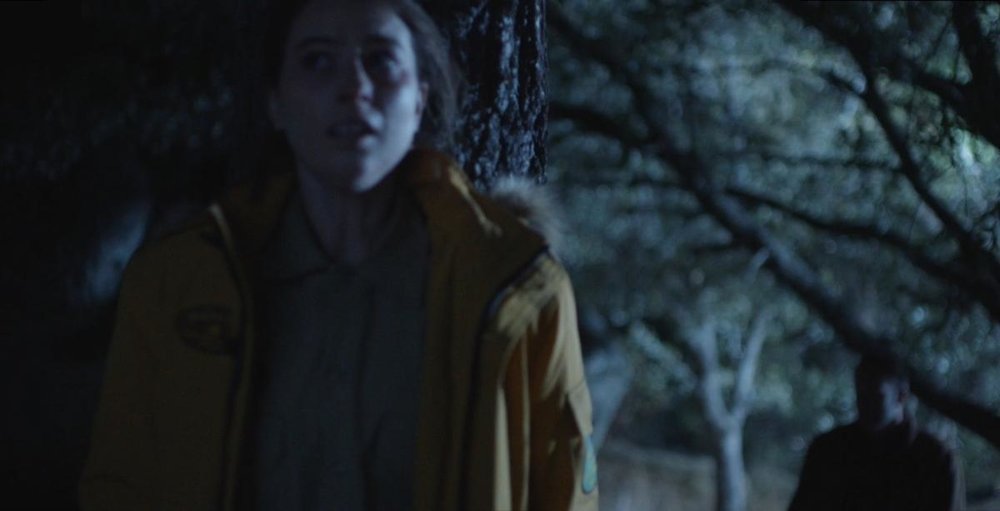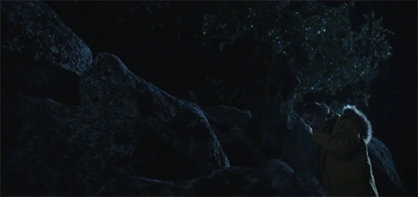Search the Community
Showing results for tags 'day for night'.
-
I'm about to start a feature and because of our schedule as well as dropping temperatures, the possibility of shooting day for night is becoming more and more real. My concern is that having red/orange light in the night scenes is extremely important to the director, but that the grade will suck all of that out. The source for the light is a campfire, but one of the characters will also be bloody and wearing a faded red jacket. I've seen the 40's/50's day for night scenes which have a lighter grade and thus more colors, but those seem to have been done because of the sheer expanse of the locations that needed to be seen. Cast Away is the best example of fire/red light I can find for day for night, however I have read that there were some VFX in those shots. While we do have access to a good VFX house, I want to be able to introduce red light practically as a baseline. One detail, we'll be shooting in the woods in California so I'll have limited generator power due to fire concerns. So essentially I am at a loss. Any advice is deeply appreciated.
- 12 replies
-
- day for night
- lighting
-
(and 3 more)
Tagged with:
-
I have the spectacular challenge, due to budget, of attempting to match day for night to our night for night footage. I have a feeling this will end up being a sad time in the DI where my night for night is graded to look more like day for night, but what can you do. My biggest concern is matching quality of light as best I can. I know the rule of thumb is generally to get some spots of day light light while avoiding the sky. Some of the matches will be for ECUs which I'm not as concerned with, but the wider matches are what I fear the most. Any and all suggestions are greatly appreciated! I've attached some ungraded lo res stills.
- 1 reply
-
- day for night
- night for night lighting
-
(and 3 more)
Tagged with:
-
**Questions marked in bold** **Attachment was too dark and compressed, a better one with the correct contrast can be found here: https://drive.google.com/open?id=16205F-smKu5lcB0M3lOmPKfVdkCIG_yp** Dear all, I am currently working on a short project with an extremely tight budget and minimal crew. About half of it will be taking place at nighttime (roughly 15 extremely still wides and a couple of close-ups with some tilting/panning involved). Due to the limited resources available, I started considering a day4night approach pretty early on. I bought a variety of filters and gradient ND's of sorts, experimenting with different combinations in order to try and manipulate the ambient light sources in-camera (I understand this approach would normally be impractical, but due to the extreme stillness of all the locked-off wides, I assumed it might work out as long as the character did not cross such sources). The results haven't honestly been that bad, but not mind-blowing either. I attached a frame to this post, shot at T2.8, 1/50 shutter with a Tiffen Cool D4N (used for its LowCon properties, as the film will be achromatic) and two .6 gradient ND's stacked on top of each other. Now it's evident that if perfected, such technique could ideally bring me the result I'm looking for, but at the same time necessitates some improvements & has some evident limitations. Such limitations would include: subject and light source always having to be placed as antipodes & subject being unable to move within frame unrestrictedly. It's basically like shooting split-screen for those movies in which the same actor plays two different roles (I'm assuming Adaptation was shot like that, potentially even The Social Network). I attached a picture in which such technique is used down below, illustrating exactly what I mean. My question is: do you guys think this is going anywhere? How would you approach a nighttime scene with no gaffers and only you on set as a DP/Operator? Finally, one last detail I should mention is that originally, an infrared implementation to the technique described above was also considered. This is mainly because of the fact that we were going to shoot the thing in August, with potentially clear skies. The idea was to turn those clear skies black using infrared filters, adding an extra touch of nighttime to the whole thing. For this purpose, I non-permanently converted my RED to full spectrum (so going back to the original OLPF is always an option). However, the camera is still not with me at the moment and I won't be able to run tests with it until mid-January. Preventively, do you guys think that shooting infrared will achieve the effect I'm looking for? Or would you say that simply implementing the technique with a gradient red filter would achieve the same, black-sky effect? Thank you all in advance for the time you took to read this, it's extremely appreciated. Best, Filippo
-
- LightingInfrared
- Day4Night
-
(and 4 more)
Tagged with:
-
Day for night lighting in B&W (tips)
Jean Paul DiSciscio posted a topic in Lighting for Film & Video
I have an upcoming production for which I am exploring day for night shooting. The film will be shot in black and white primarily on a Sony F5. Any tips/tricks that can be offered on day for night shooting, lighting needs, camera functions and post-production processes would be appreciated! We only have the location during the afternoon, but the overall aesthetic of the film references early Hollywood so the day for night shooting is appropriate. Best, JP




